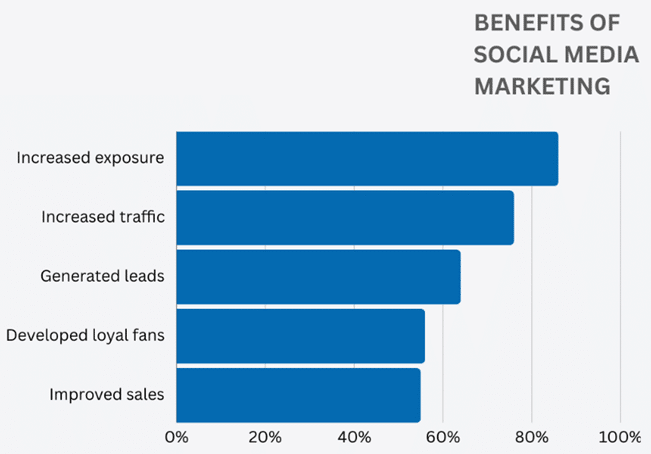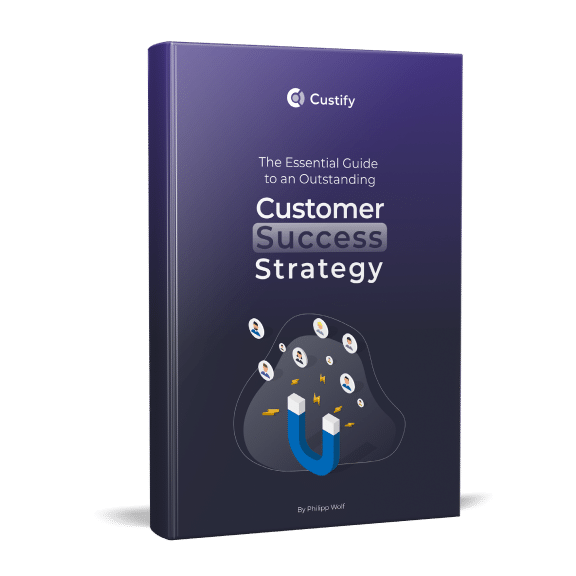Growing your business in the SaaS industry can be challenging. You have to track the numbers and look for signs that you’re on the right track. Those numbers give you clarity, but they can also mislead you.
You may see an upward trend and conclude that everything is as you expect it to be. Later, you find out that you were mistaken. Despite the positive signs, you failed to achieve your goals.
You must be thinking that it’s not possible. Well, it is! Sometimes, you end up tracking vanity metrics. These numbers may make you feel good about yourself. But that’s the only value they have to offer. You’re under the impression that your business is healthy and growing. But your efforts don’t contribute to revenue growth, customer happiness, or long-term success.
Identifying these sneaky vanity metrics can be challenging. And it’s even harder to get rid of them. Today, I’ll help you uncover your SaaS vanity metrics and talk best practices to avoid tracking them.
What Are Vanity Metrics?
In simple words, vanity metrics are numbers that make you feel good about yourself. They don’t have much to do with your performance. They please your ego. They’re a go-to choice to fill out the reports they share with investors or stakeholders.
Now, what makes vanity metrics different from the ones you should track? It’s the same as looking busy rather than putting in the effort. Tracking vanity metrics doesn’t tell you much about your performance.
Vanity metrics may look impressive on the surface, but they don’t offer meaningful insights about your business performance. You don’t know what’s working and what’s not. So, you can’t make any solid decisions.
The vanity metrics you track may look impressive on the surface, but they don’t offer meaningful insights about your business performance. You don’t know what’s working and what’s not. So, you can’t make any solid decisions
- For example, if you run an e-commerce store, the number of store visits is a vanity metric. A suitable replacement for you to track is your conversions.
- For email campaigns, the open rate is the vanity metric. It’s the click-through rate that tells you about your campaign’s performance.
- For social media, follower count is a vanity metric. What matters most is your engagement.
Still, many think tracking vanity metrics helps. The indicators may not have a direct impact on your results, but they do tell you something. And they’re not completely in the wrong here.
At the end of the day, however, tracking too many metrics can end up overwhelming you. So, you must stick to the ones that align with your goals. It’s the best way to avoid information overload.
7 Common Vanity Metrics in SaaS
Now that you know about vanity metrics, it’s time to get specific. You often see SaaS companies grapple with vanity metrics, so I decided to talk about the ones that are the most common.
1. Traffic Growth
Every online business monitors traffic growth. And there’s nothing wrong with it. It’s fine if you want to keep an eye on your traffic trends.
But does traffic growth help you achieve your goals? We agree that monitoring traffic growth can be helpful. But your visitors can include plenty of junk traffic.
It’s possible that one of your posts went viral or someone featured you. And your content ended up reaching people outside your target audience. You may attract people with no interest in considering what you offer. So, you can’t completely rely on the metric to assess your performance.
Tracking the leads you generate is a more viable approach. It tells you if you’re engaging the right audience. Another suitable metric to track will be conversions. It all comes down to generating revenue when you run a business. It’s your conversions that contribute to your profit margins, not your website traffic.
2. Free Signups
Many SaaS businesses either offer free trials or use a freemium pricing model to get traction. So, you often see companies tracking free signups.

Scoring signups may be the first step to achieving your goals. But you can’t rely on the metric to assess your growth. Some of the people who signed up may never even use your product. Even if they did, it’s uncertain they’ll end up paying for it.
What you must track instead is the number of active users. You are still monitoring users who signed up for free, but you also check if those users actually use your product. If they do, they are more likely to see the value and end up buying it.
Another viable metric you must track is the free-to-paid conversion rate. This number tells you how your product performs. You get to see if your free offering is fueling your sales funnel.
3. Social Media Follower Count
Having an active social media presence is important for a SaaS company. The world’s social media users encompass upwards of 5 billion people – even if you get a small percentage of that, it’s still a lot. It’s great for brand awareness and building a community.
However, a common mistake many make is considering the follower count as a viable growth metric. Your community is growing. But there’s no guarantee that your offer will interest your followers.
Engagement is a far better metric. Look at the people who actually interact with your posts. It tells you that your content resonates with your audience and you have a chance of attracting prospects.
You should also track your social media referrals. The number tells you about people who visited your site through your social media pages. It helps you know that your social media content strategy is working.

Another viable metric is the number of leads you generate through social media. It tells you about people who visited your site through your social media page and if they performed valuable actions. The actions may include signing up for an email list, requesting a demo, or taking your product for a spin.
4. App Downloads
People need to download your app to use it. But relying too much on app downloads is a huge mistake. People downloaded your app and installed it. You don’t know if they actually use it.
We all install random apps and forget about them. Some don’t even care about uninstalling them unless they run out of space. The apps are there on our phones alongside dozens of others.

It’s the active app users you should be chasing. Track the number of people actually using your app – it’s a much better metric to track compared to app downloads, as it indicates product adoption.
5. App Logins
I recommend that you track the number of people using your app, but one mistake is only tracking app logins. Don’t do that!
Logins don’t tell you anything about user activity. It’s another vanity metric. An app login tells you that a user opened the app and signed in. It doesn’t guarantee that they actually used the app. Furthermore, most apps today remember users, so they don’t even need to login that often.
Tracking user activity means ensuring that users do something meaningful using the app. You must keep an eye on the tasks they’re performing through your app and how those connect to their overall goals. Another viable indicator worth tracking is the time users spend while using your software.
These metrics show the value users get through your app. They’re more likely to go for the paid version if the app helps them perform useful tasks and achieve their goals.
6. Feature Usage
Even if you keep an eye on people using your app’s core features, it doesn’t tell you much. You must tie the indicator with others to get clarity.
It’s awesome to see people use specific features, but did they get value from those? That’s a different story.
What matters is that users achieve their desired outcomes through your app. What if your users find your features too complex? You must know if you’re helping your user base or actively hindering their success. To do that, look for feedback and track user satisfaction.
The easiest way of doing it is to ask for user feedback. You can conduct surveys to gather useful insights. Lastly, you ask your users to take part in usability tests.
7. Email Open Rates
Your email campaigns can have the highest return on investment of your marketing channels. You can generate an average of $36 for every $1 spent. That is, if you play your cards right and optimize your campaigns.

A common mistake many make is considering the open rate as a viable indicator. A high email open rate is encouraging. You must definitely keep an eye on it. But if you track it alone, it becomes a vanity metric.
Your open rate doesn’t tell you much. It’s possible that you captured your recipients’ attention with catchy subject lines. But do they care about what you offer? You don’t know.
What matters is that your emails lead to valuable actions. So, you should track the open rate along with the click-through rate, which tells you that your recipients considered the call to action.
Don’t forget about tracking the conversion rate of your email campaigns. It gives you more clarity. For example, if you’re promoting certain products or services through your email campaigns, you will be interested in knowing if people end up buying them.
You should also keep an eye on your unsubscribe rate. Sometimes, email campaigns do more harm than good. If you send too many emails, your recipients end up unsubscribing. Tracking the unsubscribe rate helps you know if you’re making this mistake, allowing you to be careful in the future.
Best Practices to Avoid Tracking Useless Vanity Metrics
Tracking vanity metrics can distract you. The numbers delude you and give you a false sense of security. It may have a devastating impact on your performance in the long run. Let me share a few best practices with you to help you avoid tracking these useless indicators.
1. Set Clear Goals
You must know what you strive to achieve to identify fitting performance indicators. You must establish what defines growth for you. It doesn’t have to be revenue growth all the time. You can be after brand awareness, traffic, community building, and so on.
It doesn’t matter what your goals are. You must document them and communicate them to your team. Your goals must be clear, specific, measurable, achievable, relevant, and time-bound. Doing this will help you figure out the data points that actually matter.
2. Track Actionable Metrics
Once you know your goals, the next step is to tie in the right metrics. These indicators tell you about your progress, help you identify the problem areas, and devise action plans to address them.
Remember, you shouldn’t spread yourself thin. Even when you track action-oriented metrics, monitoring too many can overwhelm you. You must focus on monitoring the ones that give you valuable insights.
For example, if you plan on monitoring retention, you could track countless metrics. But to keep things simple, tracking your churn and customer lifetime value will do.
3. Leverage User Insights and Feedback
Sometimes, you must reach out to your customers to access actionable data. You can’t simply rely on quantitative data accessible through analytics. You also need qualitative data that you access through user feedback.
You already know what’s happening through the quantitative data you have. Not knowing why it’s happening creates a blindspot that user insights and feedback can uncover.
There are many appropriate ways to collect this data. You can conduct surveys, hold user interviews, organize usability tests, and assess support tickets.
User insights and feedback help you interpret your data. Effective SaaS customer support channels are invaluable for collecting this feedback and addressing user concerns promptly. It’s how you uncover the true problems and identify opportunities to grow. Knowing why certain things happen helps you make smarter data-driven decisions and close the feedback loop.
4. Use Data to Drive Decisions
Your findings must always fuel your decisions. Even tracking the right metrics won’t do you any good if you don’t have a way to benefit from the insights. Things will be the same if you track vanity metrics. You won’t know where you are and where you’re going.
Even the right indicators become vanity metrics when you use them to fill your reports. You should instead use the insights to fuel your customer success strategy and design a roadmap to achieve your goals. The data helps you optimize your campaigns and improve customer experience.
You must also encourage your team to use the data to challenge their assumptions. These insights must guide their work and act as a compass to steer your efforts in the right direction.
5. Ensure Continuous Improvement
It’s an ongoing process to build a successful SaaS business. So, tracking the right metrics isn’t a one-time activity. You need to create a culture of continuous improvement.
You must review your performance based on actionable SaaS metrics and user feedback. Always look for what’s working and what isn’t. You need to be ready to pivot your strategies based on what the data tells you.
It’s an iterative approach where you learn through different experiences. It’s how you optimize and grow. You thus avoid the stagnation that focusing on vanity metrics can cause.
Final Thoughts on the Vanity Metrics in SaaS
Tracking vanity metrics gives you a false sense of security and accomplishment. You’re under the impression that your efforts get the needle moving. However, in reality, you’re not getting anywhere.
Vanity metrics may look good on paper, but don’t give you the insights you need to grow. You need the data that aligns with your goals to make smart decisions. So – focus on what matters and do what you must to achieve growth. Stop chasing the numbers that make you look busy. Tracking actionable metrics helps you determine how healthy your business is and what you must do to scale it.


![Customer Acquisition Cost (CAC): How to Calculate, Interpet & Optimize It [Formula + Examples]](https://d2mkz4zdclmlek.cloudfront.net/blog/wp-content/uploads/2023/05/blog-cac.png)

